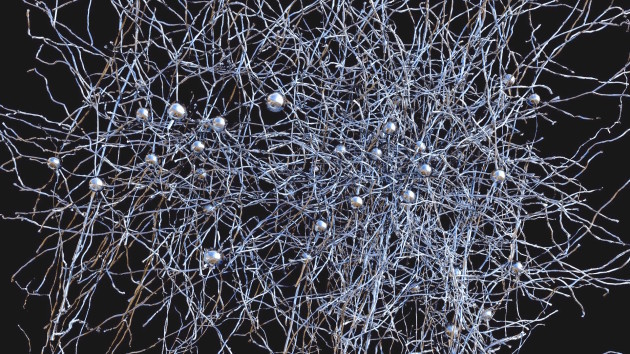
Seattle’s Allen Institute for Brain Science is in on a multimillion-dollar campaign to trace the connections between the neurons in a mouse’s brain and figure out what they do, well enough to create a 3-D wiring diagram.
The five-year project – backed by the federal government’s Intelligence Advanced Research Projects Activity, or IARPA – is aimed at reverse-engineering the way the brain processes information. The project is called Machine Intelligence From Cortical Networks, or MICRONS.
“The reason IARPA is funding this is not merely to get a better understanding of the brain, but to get inspiration from biology to do the next iteration of machine learning,” R. Clay Reid, the Allen Institute’s principal investigator for the project, told GeekWire.
IARPA is the U.S. intelligence community’s equivalent of the Pentagon’s DARPA think tank, and you can assume that the new types of artificial intelligence programs inspired by MICrONS could help give the United States an edge when it comes to analyzing data for national security purposes.
At the same time, neuroscientists will benefit from seeing how neurons work together in unprecedented detail. “It’s absolutely a win-win situation,” Reid said.
The institute is part of a consortium that also includes Baylor College of Medicine and Princeton University. IARPA awarded a $21 million contract to Baylor and an $18.7 million contract to the Allen Institute, the research institutions said today.
Baylor’s researchers will use functional brain imaging to watch how neurons fire in the visual cortex of mice. Then scientists at the Allen Institute will slice the mouse brains into super-thin layers and map the neurons using electron microscopes.
“The data we’re collecting is massive, with the work having virtually no margin for error,” said Christof Koch, the Allen Institute’s president and chief scientific officer. “If we lose two slices of brain in a row, each of which is vastly thinner than a human hair, we cannot hope to reconstruct the segment faithfully in three dimensions and have to start over.”
The data set will be turned over to Princeton, where researchers will use computer tools to produce an annotated wiring diagram. “The goal is to fully reconstruct a volume of brain that is more than 1,000 times larger than before,” Princeton neuroscientist Sebastian Seung told GeekWire in an email.
The wiring diagram will cover a cubic millimeter of brain tissue – which is about the size of a large poppy seed. But it should reveal how myriads of neural connections do the work of cognition.
“In the coming years, we’ll go from thousands of connections to tens of thousands, hundreds of thousands, potentially many millions – and that’s where the real work begins,” Reid said.
Wyss Institute will lead IARPA-Funded brain mapping consortium, https://t.co/L9AttBBdJk pic.twitter.com/1WQPOfxrCa
— Wyss Institute (@wyssinstitute) January 26, 2016
The consortium that includes the Allen Institute is one of three research groups working on the MICrONS project.
The Wyss Institute for Biologically Inspired Engineering at Harvard University leads another consortium that has received a $21 million IARPA contract and will make use of RNA-barcoding technology. Meanwhile, a team led by researchers at Carnegie Mellon University will record neural signaling and develop computational models of the brain’s circuitry, under the terms of a $12 million IARPA contract.
IARPA’s initiatives in neuroscience and machine learning build upon the Obama administration’s $100 million BRAIN Initiative. In addition to MICrONS, the intelligence think tank is pursuing several other neuroscience projects.



